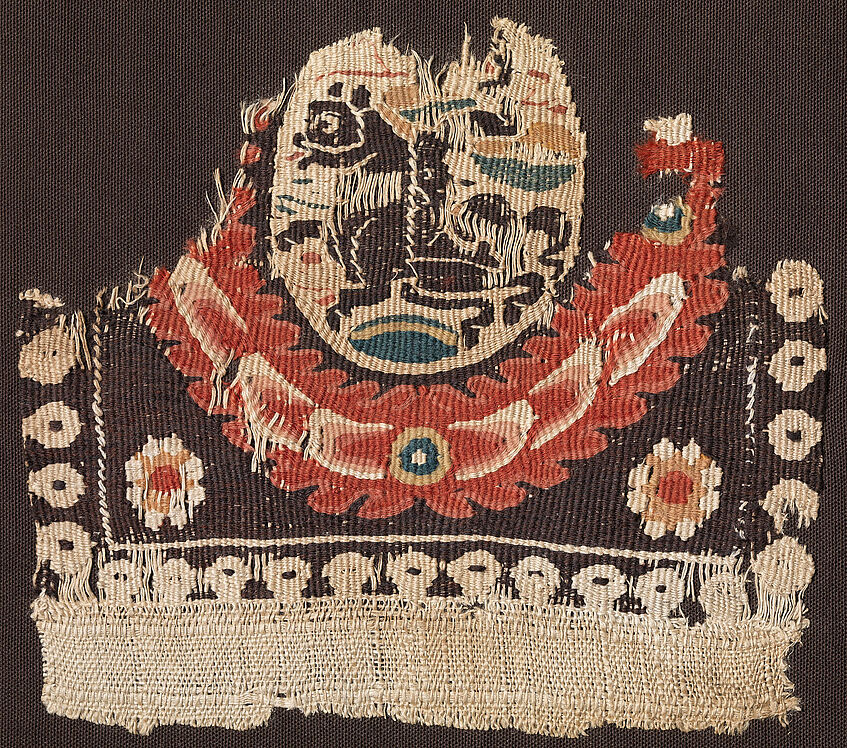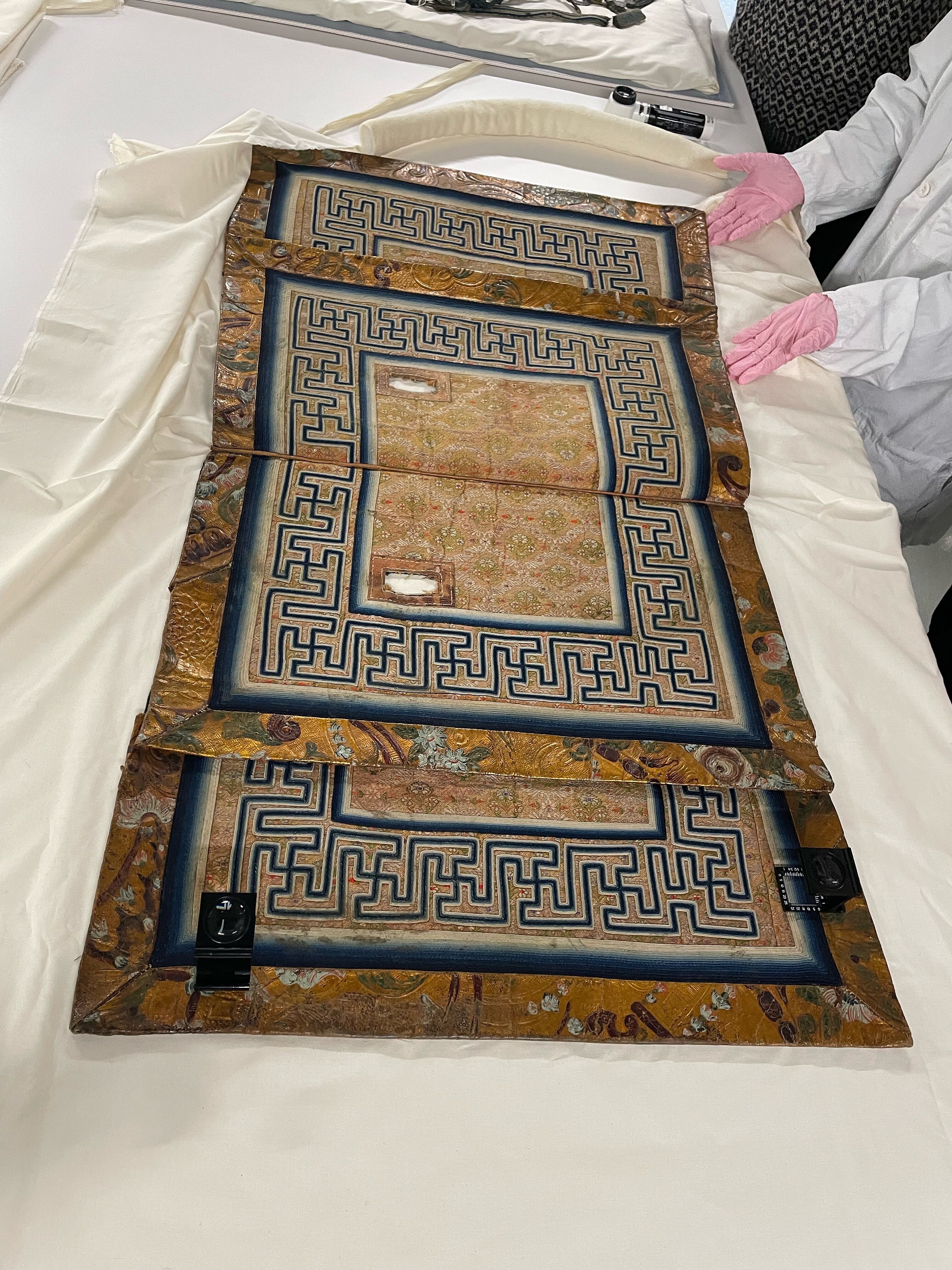Cotsen Global Equine Cultures Textile Colloquium, February 28 – March 1, 2025
by Lonneke Delpeut
From February 28th until March 1st, the Cotsen Global Equine Cultures Textile Colloquium took place at the George Washington University Museum and the Textile Museum, organised by the Cotsen Textile Traces Study Center. The Cotsen Textile Traces Study Center is a closed collection which was founded by Lloyd Cotsen and contains all kinds of textiles from all over the world. Every year, they organise a colloquium which revolves around a temporary exhibition; this time equine textiles sparked the interest of the curators. Unfortunately the exhibit was not yet finished when the conference took place, but there will be another (public) event related to the exhibition, albeit online. For three days, all we did was talk about equine research, resources, materials, exhibitions, and we got to look at all different kinds of equine textiles as well as textiles that had depictions of equines on them (hence my involvement!). My husband accompanied me on this trip, and we attached some additional days to our trip so we could visit the many museums Washington has to offer. I recently started a new Instagram page, called ‘’Yes, I have seen a horse’’, where I apply what I have learned during my dissertation writing to images of horses from all over the world. The museums in Washington were a true treasure trove!


The first day the colloquium was opened by Karthika Audinet, the curator of the Cotsen Collection and main organiser of the event. The exhibition is co-organised using the collections of the George Washington University Museum and Textile Museum, so we were also presented with the ideas for the exhibition, which were lead by the expertises of the curators, Lee Talbot and Sumru Krody. We heard everything about equine textiles, i.e. textiles that were part of the horses’ harness / wardrobes, mainly from Asia. After this, it was time to see some actual objects, and as many of you know, this is truly the coolest part of doing research! There were several pieces which were used on horses, such as saddle blankets and covers, as well as pieces of textile which had horse decorations on them; most of them being garments. I got a sneak peak at my particular case study, which I will tell you more about below. In the afternoon, we got to listen to the work of four researchers focussing on equines (me, among others) as well as a Dutch artist who makes art from horse hair.
My presentation treated the what, how and who of equine imagery, applying the methodology I used in my dissertation on images of horses from around the world. I did this in traditional Lonneke-fashion, with lots of gestures and movements (see photo 1!). Professor Janet Allison Hoskins showed us a traditional horse related event which still takes place in Sumba, Indonesia. Yuxi Pan, PhD-student at the University of London, focussed on flying horses in Tang and Yuan Textiles, of which there was one in the Cotsen Collection. Professor Sim Yeon-Ok from the Korea National University of Cultural Heritage showed us different techniques of weaving horse hair in Korea, and even brought some examples for us to look at. Finally, artist Marianne Kemp showed us her art made from horse hair, showed us her process, and some of the pieces which she brought along with her. The event was only attended by students as well as some professors from George Washington university. This small group made for a very enthusiastic and encouraging environment.



The second day we made a field trip to the Textile Museum’s conservation and collection centre, where Lee Talbot showed us around their extremely well equipped conservation centre. We were shown the labs as well as their storage facility, which was extremely impressive. Afterwards, Sumru Krody showed us all kinds of equestrian textiles from Central Asia, Iran, and the Ottoman Empire (see photos). This included blankets that went over the saddle (photo 2) as well as blankets that went underneath the saddle (photo 3). We also got to see a 100-year old Chinese bridle, which as a horse person myself, was extremely cool. In the lunch break, the students who are doing an internship at the Textile Museum presented their research paper to the experts, and we were supposed to give feedback and to an extent mentor the students. The variety of topics was great, and the students all showed great promise. In the afternoon, we went back to studying some more equestrian textiles, after which we drove back to the Textile museum. Here I had a quick peek at their exhibition, which was an impressive collection of textiles from all over the world. The Equine Colloquium was organised around a planned exhibition which will take place at the museum next year so we mainly saw objects which will take the place of the current exhibition. It was inspiring to see the process behind the curtain, and to see the exhibition space which will be used for the objects.
Saturday was the last day of the official program, which enabled us to come ‘’closer’’ to our own research. Part of the deal was that every invited speaker studies at least one object from the Cotsen Textile Traces Study Center, and since my background is in Egyptology, I chose a Coptic textile fragment which contains the depiction of a horse (photo 4). The morning was spent closely studying this fragment (photo 5), and getting a crash course in textile techniques from Karthika Audinet, to get a closer understanding of how the depiction was made into the textile. The research regarding this fragment will be presented at another related event which will take place online some time next year. Since there was only one fragment for me to study closely, we spent the afternoon visiting the Library of Congress and the Folger Library.
I would like to thank the organisers of the conference once again, and all the students involved, as well as the curators who so kindly welcomed us and showed us around. I am looking forward to hearing more about everyone’s research at the panel next year.
- Lonneke Delpeut is a university assistant (predoc) at the Department of Egyptology and a histcult:doc fellow. Read more about Lonneke and her project here.
